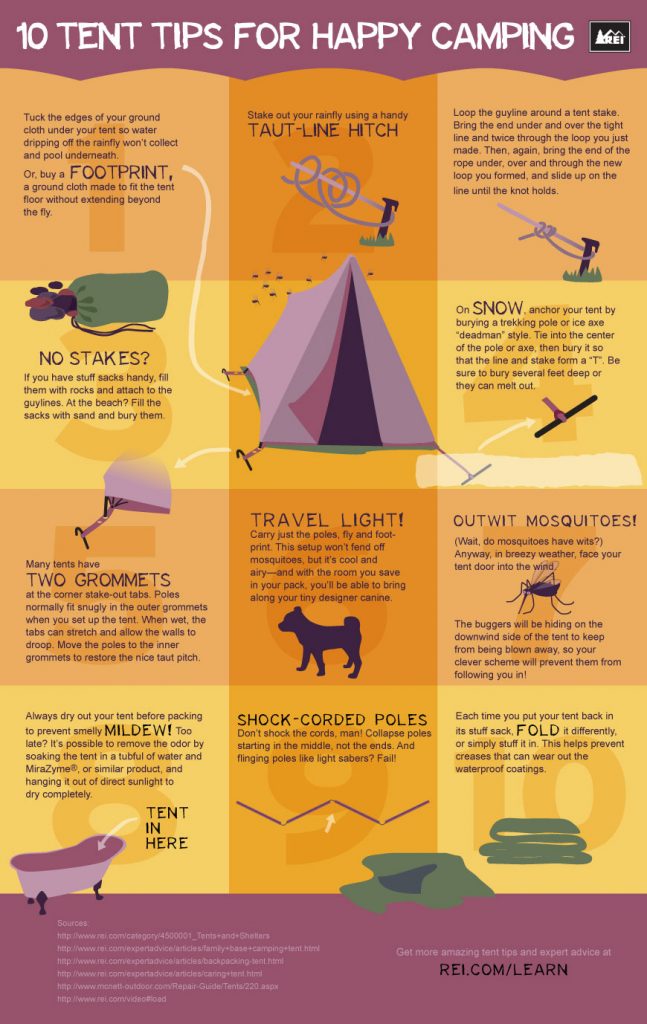Winter months camping is an enjoyable and adventurous experience, but it needs proper equipment to ensure you remain cozy. You'll need a close-fitting base layer to trap your temperature, along with a protecting jacket and a water-proof covering.
You'll additionally require snow risks (or deadman supports) buried in the snow. These can be connected using Bob's clever knot or a regular taut-line hitch.
Pitch Your Outdoor tents
Winter months outdoor camping can be an enjoyable and adventurous experience. However, it is essential to have the proper equipment and recognize exactly how to pitch your camping tent in snow. This will prevent cold injuries like frostbite and hypothermia. It is also important to consume well and remain hydrated.
When setting up camp, ensure to select a site that is sheltered from the wind and without avalanche threat. It is also a good idea to load down the area around your tent, as this will help reduce sinking from temperature.
Prior to you set up your tent, dig pits with the exact same size as each of the support factors (groundsheet rings and individual lines) in the center of the outdoor tents. Fill these pits with sand, stones and even stuff sacks loaded with snow to portable and secure the ground. You may also wish to think about a dead-man support, which entails tying tent lines to sticks of wood that are buried in the snow.
Pack Down the Area Around Your Camping tent
Although not a requirement in the majority of locations, snow risks (also called deadman anchors) are an excellent addition to your tent pitching kit when camping in deep or compressed snow. They are essentially sticks that are developed to be buried in the snow, where they will freeze and create a strong anchor factor. For ideal outcomes, make use of a clover drawback knot on the top of the stick and hide it in a few inches of snow or sand.
Set Up Your Tent
If you're camping in snow, it is a good concept to make use of an outdoor tents made for winter months backpacking. 3-season outdoors tents function great if you are making camp below timberline and not expecting specifically rough climate, however 4-season camping tents have sturdier poles and textiles and supply even more security from wind and heavy snowfall.
Be sure to bring adequate insulation for your resting bag and a cozy, dry inflatable floor covering to sleep on. Blow up mats are much warmer than foam and help prevent cool areas in your camping tent. You can also include an additional mat for sitting or food preparation.
It's likewise a good concept to establish your camping tent close to an all-natural wind block, such as a group of trees. This will make your camp extra comfy. If you can't locate a windbreak, you can develop your own by excavating openings and burying things, such as rocks, outdoor tents stakes, or "dead man" anchors (old outdoor tents man lines) with a shovel.
Tie Down Your Outdoor tents
Snow stakes aren't necessary if you make use of the best techniques to secure your camping tent. Hidden sticks (perhaps collected on your strategy walking) and ski poles function well, as does some version of a "deadman" hidden in the snow. (The idea is to create a support that is so strong you will not be able to draw it up, despite a great deal of initiative.) Some manufacturers make specialized dead-man supports, but I favor the simplicity of a taut-line hitch connected to a stick and then hidden in the snow.
Know the surface around your camp, particularly if there is avalanche threat. A branch that falls on your camping tent can damage it or, at worst, injure you. Likewise be wary of pitching duffel bag your camping tent on a slope, which can trap wind and lead to collapse. A protected location with a low ridge or hillside is much better than a high gully.
